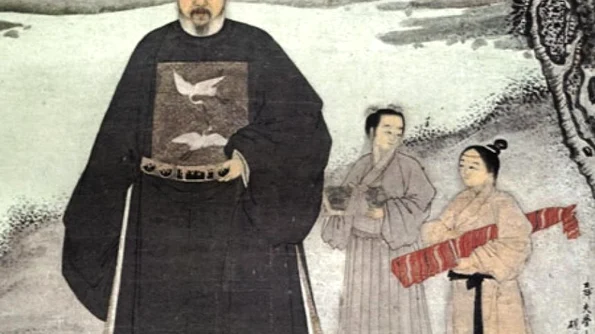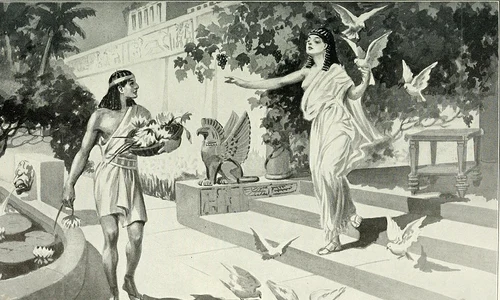
China's decline and how the West became the center of the world
China was always more than just a state;it was a civilization in itself and, at some point in history, during the Song dynasty, probably the world’s most advanced civilization. In the Late Middle Ages – Early Modern age, China was still way ahead of Europe. However, in a short period of time, the European Old World would quickly and definitively surpass China in terms of cultural, technological and economic development. Although it had everything needed to become the most important civilization of the modern era, China lost this battle. The question all historians, political scientists and economists ask is simply… Why?
In the 15thcentury, no man would have foreseen China’s decline. So what are the most common theories regarding this sudden decline in favour of Europe?
All throughout the Middle Ages, China’s population, a state with an old imperial tradition, was larger than continental Europe’s. It was a subcontinent in itself. Even after the year 1500, when Europe’s population started growing, China and the entire South-East Asia also went through a significant demographic growth. Some authors consider that this demographic growth somehow blocked the region’s progress;others however, like Sugihara Kaoru, speak of an East-Asian miracle, an equivalent to the industrial revolution in Europe. There is, however, an important difference. As Kenneth Pomeranz observes, the two regions started from the same conditions (the demographic growth) but developed in two different directions:Europe takes the capital’s way, while South-East Asia, China included, focuses on the workforce.
The demographic explosion originates in the development of flooded rice culture, perfectly adapted to the plains of Central-Southern China, a formerly underpopulated area. During the Empire’s first stage of development, Northern China had been the main economic centre of the state;however, thanks to the rice culture, the population in the South grew rapidly and by the year 1200, Southern China was twice as populated as Northern China (a region that also experienced problems at its borders, caused by the Mongolians).
In the year 500, China’s population was around 50 million people. By 1200, it had passed 100 million. Unfortunately, this demographic growth caused a very low workforce cost. In the long run, that led to lack of interest for technological innovations that could replace manual labour (the element that led to England’s Industrial Revolution).
Another apparent advantage of China was its centralised administration. Ever since the empire’s beginning, China was a centralised state. Western Europe, on the other hand, was deeply divided into numerous states. This division was, in the long-term, the key to Europe’s success. The existence of numerous political entities encouraged competition on all levels:political, economic, cultural, commercial, technological etc. This is why, during the Late Middle Ages – Early Modern Age, the European monarchs encouraged commerce, territorial conquests and colonization. This desire to surpass one another, to compete with other leaders, expanded Europe’s borders further and further, while China was self-enclosed.
China, a former leader in geographical expeditions
The best example is the difference between the Chinese and European geographical expeditions. In the early 15thcentury, China had the most advanced fleet in the world. Led by Zheng He, a close ally of the emperor, the Chinese vessels were first to arrive in areas only known to European explorers decades later. In the 6 journeys organised in 1405-1424, Zheng He travelled to Thailand, Sumatra, Malacca, Ceylon and East Africa.
Zheng He was China’s biggest chance at progress and world domination. It was also its biggest missed opportunity. In 1424, the emperor dies and China’s maritime ambitions perish with him. Zheng He’s expeditions were suspended and an imperial decree forbade traveling overseas. Decades later, Europe’s explorers discovered the same places as Zheng He, but – unlike the Chinese – they would use violence to impose their rule and take control over the seas.
What happened? Why did the Chinese stop being interested in expanding their horizons, in travelling and exploring other realms? Paul Kennedy believes that the Chinese leaders were more preoccupied with the threats at their northern border, where they were being threatened again by the Mongolians. Under these circumstances, maintaining a fleet required important funds, which would’ve been more useful if invested in border control.
Another important factor was the cultural one, the deep conservatism of the Confucian bureaucracy. This conservatism originated in the bureaucracy’s resentment towards the changes introduced by the Mongolian dynasty. Besides, the imperial bureaucracy was also very suspicious, even hostile, towards the military and the merchants, and wanted to end all of their initiatives, which they perceived as endangering their privileged positions.
Historian Niall Ferguson believes the key element in the West’s advance wasn’t actually its superiority, but its adversaries’ weakness. For example, in the mid-18thcentury, a series of factors (monetary and financial crisis, climate changes and epidemics) caused the fall of the Ming dynasty and, as such, China’s weakness in front of an advancing West.
Institutional advantages:The mandarin bureaucracy – efficient or not?
According to Ferguson, the main difference between East and West, which also serves to best explain the West’s advance, is the institutional one. The states in Western Europe created more efficient institutions, thanks to the political and economic competition between them. But we’ve all heard of the famous mandarin bureaucracy, known as the best prepared in the world. Wasn’t it also efficient?
The system of imperial exams was started by emperor Yang, in the 7thcentury, and developed by his successors. Since then, the recruitment in the imperial bureaucracy was made through a series of very difficult written exams, which were designed to verify two things:the candidates’ knowledge of Confucianism and their practical skills, of drafting and writing official documents.
At first, we’d be tempted to say that this sort of exams was recommended, as only the best candidates became imperial officials. The problem is that this kind of competition does nothing to promote innovation or desire for change. It does, in fact, the opposite:it encourages ideological conformity and it is unable to create original ideas. The result was an apparently performant bureaucracy which kept China still, unable to progress.
Confucianism, the source of a fatal conservatism
Joseph Needham, the author of a history of Chinese science, provides us with a very famous theory on China’s backwardness. Needham believes it was the cultural factors that prevented the Chinese accomplishments’ transformation into what we, Europeans, would call science. According to Needham, the religious and philosophical mentality of Chinese intellectuals prevented them from believing in the so-called laws of nature, as created by a rational being. That’s why Chinese didn’t believe rational beings could – and should – try to explain the divine laws of existence.
From this idea, Max Weber concluded that the Confucian rationalism was like a rational adjustment to the world, unlike the Western rationalism, that sought the rational domination of the world.
While we’re still debating cultural factors, it’d be interesting to mention a rather odd argument brought by Niall Ferguson. He says the Europeans were also lucky when it comes to their drug of choice. Tired of alcohol, the Europeans were “awakened” by American tobacco, Arab coffee and Chinese tea, whilst the Chinese were lethargic because of opium consumption.
The big trap
Mark Elvin developed a famous theory on the importance of socio-economic factors in China’s decline, which helped to explain why this country, despite its riches, internal stability and scientific accomplishments, didn’t experience its own Industrial Revolution. According to Elvin, this reason is quite simple:China’s preindustrial economy was self-sufficient and didn’t need an extra motivation for profit that could lead to technological innovations. China’s commercial networks and production methods were quite efficient, and the workforce was abundant and cheap;as such, the economy reached a balance between supply and demand, eliminating the economic pressure that usually leads to a rise in economic efficiency. This is what Elvin calls the “high-level equilibrium trap”.
Moreover, the intellectual changes caused by the progress from Taoism to Confucianism meant that the interest in natural sciences and mathematics was replaced by the interest in philosophy and ethics, creating a hostile environment for technological innovations.
At the other end of the world, Great Britain of the Early Modern Age had a less efficient economy;its workforce was more expensive and its internal trade was weaker. According to Elvin, these circumstances created an imbalance between supply and demand and economic problems. However, these problems represented a very strong motivation for creating a new technology.
For Ferguson, this high-level equilibrium of the Ming dynasty created an impressive state on the outside, but weak on the inside:the province area could sustain a growing population due to rice culture, but it could only do that through a static social order incapable of innovation.
To conclude with, it was its conservatism that closed China’s road to greatness. Its civilization was, for a long time, the most advanced in the world, and the Europeans could never dream of surpassing it. There came a time, however, that the tradition – the exact tradition that transformed China into a great civilization – started being an obstacle. It was an obstacle that, in the end, the Chinese could not overcome and they were left stuck in a fatal conservatism. This is why China was left behind, leaving the road clear for Europe’s impressive progress.















